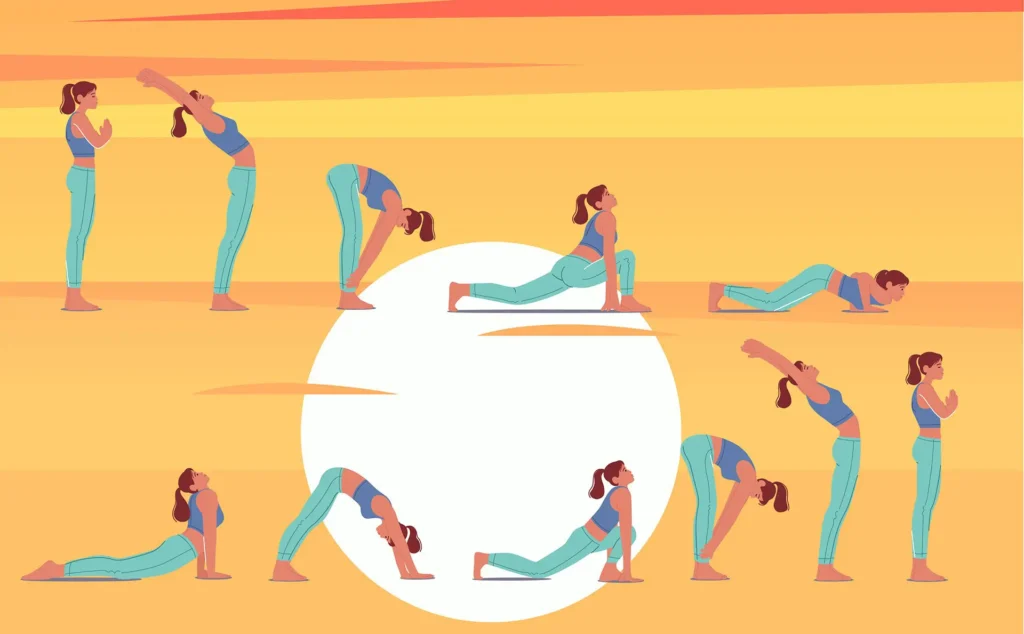Blogs
Yoga Nidra
Swami Satyananda Saraswati and the Science of Yoga Nidra: A Journey from Munger to the World

Introduction: What Is Yoga Nidra?
Yoga Nidra, commonly referred to as yogic sleep, is a profound practice of conscious relaxation where the practitioner remains awake yet deeply rested. It is not ordinary sleep, but a state of dynamic sleep, where the body relaxes completely while the mind remains alert and aware.
The method we know today was developed and systematized by Swami Satyananda Saraswati, the revered spiritual teacher and founder of the Bihar School of Yoga in Munger, Bihar. He introduced Yoga Nidra in the 1960s as a structured practice drawn from ancient Tantric scriptures, adapted to modern needs.
Swami Satyananda Saraswati: The Modern Pioneer of Yoga Nidra
Swami Satyananda Saraswati (1923–2009) was not only a mystic and yogi but also a visionary who understood the modern world’s growing stress, anxiety, and disconnection. His spiritual training under Swami Sivananda of Rishikesh, and later his own realizations, led him to develop practical yoga systems accessible to both laypeople and spiritual seekers.
In 1962, he founded the Bihar School of Yoga, which became a global epicenter of classical yoga education. One of his most influential contributions was the codification of Yoga Nidra into an 8-step method that could be practiced by anyone, regardless of age, background, or religion.
Yoga Nidra: The Book That Changed Rest Forever
His landmark book, “Yoga Nidra”, published in 1976, offers a complete explanation of the technique, its philosophical roots, psychological implications, and step-by-step guidance. It also explores scientific and therapeutic dimensions—how Yoga Nidra can reprogram the subconscious, release deep-seated trauma, and enhance creativity, intuition, and inner peace.
The method became so effective that it has been widely adopted in therapy, education, corporate wellness, military trauma care, and meditation retreats around the world.
Why Yoga Nidra Works: Science and Spirituality Meet
Yoga Nidra bridges the gap between ancient meditation and modern neuroscience. Studies show it induces the alpha and theta brainwave states, associated with creativity, memory processing, and emotional integration.
Benefits include:
Stress and anxiety reduction
Better sleep quality
Enhanced memory and learning
Healing of trauma and PTSD
Increased focus and emotional stability
Conclusion: Yoga Nidra as a Tool for Awakening
Swami Satyananda Saraswati’s Yoga Nidra is far more than a relaxation technique—it is a complete sadhana, a pathway to self-awareness, emotional healing, and inner transformation.
From a humble beginning in Munger, Bihar, Yoga Nidra has touched millions of lives worldwide—offering a gentle, scientific, and sacred way to reconnect with the inner self.
“Through Yoga Nidra, you not only relax physically but also free the subconscious and unconscious layers of the mind.”
— Swami Satyananda Saraswati
The Eight Classical Stages of Yoga Nidra
Swami Satyananda Saraswati presented Yoga Nidra as an 8-stage guided process, combining the depth of ancient yogic wisdom with insights from modern psychology. Each step is designed to take the practitioner gradually into deeper levels of awareness and inner stillness.
1. Preparation and Physical Stillness
The practice begins by lying flat in Shavasana (corpse pose). The body must be fully supported and perfectly still. Eyes are gently closed, and attention is guided inward. This initial stillness lays the foundation for deep physical relaxation and sets the stage for mental clarity.
2. Sankalpa – The Inner Resolution
Sankalpa is the personal resolve or intention, considered the most powerful part of Yoga Nidra. It is a short, meaningful affirmation that the practitioner silently repeats at the beginning and end of the practice. This deeply planted intention influences the subconscious mind and supports personal transformation.
Examples of Sankalpa:
“I am confident and calm.”
“I will succeed in all my efforts.”
“My body is healthy and at ease.”
3. Rotation of Consciousness (Body Scan)
This step involves mentally guiding awareness through various parts of the body in a set sequence, usually starting from the right hand thumb. The process is done without any physical movement and helps to:
Deepen the connection between body and mind
Release physical tension
Train the mind to stay focused and present
This stage is rooted in the ancient tantric practice of nyāsa, where conscious attention activates energy points in the body.
4. Awareness of Breath
Attention is now shifted to observing the natural flow of breath. The breath is not controlled or modified—just observed as it flows in and out of the nostrils, chest, or abdomen. This simple awareness calms the nervous system, reduces mental chatter, and brings the practitioner into a deeper meditative state.
5. Experiencing Opposites (Pairs of Contrasts)
The practitioner is guided to feel and mentally experience pairs of opposite sensations or emotions, such as:
Heat and cold
Heaviness and lightness
Joy and sorrow
This conscious encounter with opposites allows the mind to release emotional tensions and cultivate inner balance. It dissolves duality and sharpens emotional intelligence.
6. Visualization
In this stage, the mind is led through a series of mental images or symbolic scenes. These might include:
A flickering flame
A vast, clear sky
A still mountain lake
A peaceful temple
This creative visualization process purifies the subconscious, enhances intuition, and allows for deep emotional release. It is also a doorway into higher states of meditation and insight.
7. Repetition of Sankalpa
After the body and mind have been deeply relaxed and purified, the practitioner repeats the Sankalpa once again. The subconscious is now more receptive, and the intention sinks deeper, increasing its impact and likelihood of manifestation.
8. Externalization and Closing
The session is gently brought to a close by guiding the practitioner back to external awareness. Attention returns to the body, the sounds in the environment, and the sensation of space. Gentle movement is encouraged before opening the eyes. This ensures the transition from inner stillness to waking life is smooth and grounded.
Surya Namaskar
Swami Satyananda Saraswati and the Sacred Science of Surya Namaskar

Introduction: What Is Surya Namaskar?
Surya Namaskar, or Sun Salutation, is an ancient yogic sequence that promotes holistic physical, mental, and spiritual well-being. It consists of 12 powerful postures synchronized with specific mantras that honor the Sun, the source of life and energy.
Swami Satyananda Saraswati, founder of the Bihar School of Yoga, established Surya Namaskar as a spiritual sadhana combining asanas, breath awareness, and mantra chanting. His book, “Surya Namaskara: A Technique of Solar Vitalization”, elaborates this profound practice.
Swami Satyananda Saraswati: The Modern Torchbearer of Surya Namaskar
Swami Satyananda Saraswati (1923–2009) was not just a spiritual master and yogi, but also a modern visionary who understood the rising physical, mental, and emotional imbalances of the modern world. Trained under the guidance of Swami Sivananda in Rishikesh, he absorbed deep yogic wisdom and later formulated practical systems to make yoga accessible and relevant for everyone—from householders to dedicated spiritual aspirants.
In 1962, he established the Bihar School of Yoga, which became a globally respected center for classical yoga education. One of his most lasting contributions was the revival and systematization of Surya Namaskar (Sun Salutation)—a timeless sequence that combines movement, breath, and awareness. Swami Satyananda refined this practice into a complete and balanced module that could be practiced by anyone, regardless of age, experience, or belief system.
Surya Namaskar: The Sequence That Reconnects Body and Breath
Swami Satyananda emphasized Surya Namaskar as not only a physical sequence but also a spiritual practice rooted in ancient yogic tradition. In his teachings and publications, he elaborated on its symbolic meaning, physiological effects, and spiritual dimensions. The sequence, when practiced with awareness, stimulates all systems of the body—muscular, circulatory, respiratory, digestive, and endocrine—making it one of the most efficient daily practices.
This method became widely respected for its simplicity, versatility, and effectiveness. Today, it is practiced not just in yoga studios, but in schools, therapy centers, wellness retreats, and homes across the globe. Surya Namaskar has emerged as a go-to tool for holistic fitness and inner harmony, appealing to people from all walks of life.
Surya Namaskar: More Than Just Exercise
1. Pranamasana (Prayer Pose)
Mantra: Om Mitraya Namaha
Posture: Stand straight with feet together. Bring your palms together in front of the heart center in a prayer position (Anjali Mudra).
Breath: Inhale deeply and exhale slowly while grounding yourself.
Focus: Set your Sankalpa (intention) for the practice. Feel centered, calm, and ready. This pose connects you to the inner self and to the solar energy.
Note: This is the starting point for mental and physical alignment.
2. Hasta Uttanasana (Raised Arms Pose)
Mantra: Om Ravaye Namaha
Posture: Inhale slowly, raise your arms overhead, and gently arch your back while keeping the arms straight and palms facing inward or slightly touching. Look slightly upward if comfortable.
Breath: Inhale fully as you lift and stretch.
Focus: Open your chest and heart to receive the sun’s energy. Feel expansion and vitality throughout the body.
Note: Avoid compressing the lower back; engage the core lightly for support.
3. Padahastasana (Hand to Foot Pose)
Mantra: Om Suryaya Namaha
Posture: Exhale slowly, bend forward from the hips, keeping the spine long. Bring your hands beside your feet or on the floor if possible, with knees slightly bent if needed.
Breath: Exhale completely as you fold.
Focus: Detoxify by compressing the abdominal organs. Lengthen the hamstrings gently. Relax the neck and face.
Note: Avoid forcing the stretch; flexibility will improve gradually.
4. Ashwa Sanchalanasana (Equestrian Pose)
Mantra: Om Bhanave Namaha
Posture: Inhale and step your right leg back, lowering the knee gently to the floor if needed. Raise your chest and look forward. Your left knee should be bent at a right angle with the foot flat on the ground.
Breath: Inhale deeply as you extend and open the body.
Focus: Strengthen balance and stability. Open the hip flexors and expand the lungs for better oxygen intake.
Note: Keep your back straight and shoulders relaxed.
5. Dandasana (Plank Pose)
Mantra: Om Khagaya Namaha
Posture: Hold your breath briefly or inhale as you bring the left leg back to meet the right, coming into a straight plank position. Body forms a straight line from head to heels.
Breath: Hold briefly or take smooth breaths if possible.
Focus: Build core strength, endurance, and mental focus. Activate the whole body evenly.
Note: Engage the abdominal muscles and avoid sagging hips.
6. Ashtanga Namaskara (Salute with Eight Parts Pose)
Mantra: Om Pushne Namaha
Posture: Exhale and lower your knees, chest, and chin to the floor, touching eight points: two feet, two knees, two hands, chest, and chin. Hips are slightly raised.
Breath: Exhale as you lower down.
Focus: Cultivate body awareness and surrender. This pose massages the digestive organs and strengthens the arms.
Note: Keep elbows close to the body.
7. Bhujangasana (Cobra Pose)
Mantra: Om Hiranyagarbhaya Namaha
Posture: Inhale and slide forward, lifting your chest up into a gentle backbend with elbows bent slightly and shoulders relaxed. Keep your pelvis on the floor.
Breath: Inhale fully as you open the chest.
Focus: Improve spinal flexibility and open the heart chakra. Stimulate the nervous system and boost energy flow.
Note: Do not overextend the lower back; listen to your body.
8. Parvatasana (Mountain Pose / Downward Dog Pose)
Mantra: Om Marichaye Namaha
Posture: Exhale, lift your hips up and back, straightening your legs and forming an inverted “V” shape with the body. Hands shoulder-width apart and feet hip-width apart.
Breath: Exhale deeply as you stretch.
Focus: Increase blood circulation, especially to the brain. Lengthen and strengthen the entire body.
Note: Keep the neck relaxed and head aligned with the arms.
9. Ashwa Sanchalanasana (Repeat on Other Leg)
Mantra: Om Adityaya Namaha
Posture: Inhale and step the left leg forward between the hands, lowering the right knee gently to the floor. Raise your chest and gaze forward.
Breath: Inhale fully as you open the chest.
Focus: Restore balance and activate energy flow equally in both legs and hips.
Note: Maintain stability and avoid tension in the shoulders.
10. Padahastasana (Repeat Forward Bend)
Mantra: Om Savitre Namaha
Posture: Exhale and bring the right leg forward to meet the left. Fold forward again, hands beside the feet.
Breath: Exhale completely as you fold.
Focus: Further detoxify and stretch the hamstrings and spine. Relax the mind and body deeper.
Note: Release tension in the neck and jaw.
11. Hasta Uttanasana (Raised Arms Pose Repeat)
Mantra: Om Arkaya Namaha
Posture: Inhale, sweep your arms upward and gently arch backward, opening the chest once more.
Breath: Inhale fully as you stretch.
Focus: Feel rejuvenated and open to the sunlight’s energy. Lengthen your spine and energize the whole body.
Note: Keep your movements slow and smooth.
12. Pranamasana (Return to Prayer Pose)
Mantra: Om Bhaskaraya Namaha
Posture: Exhale and bring your palms back together in front of the heart, standing tall and grounded.
Breath: Exhale completely, allowing a sense of calm and gratitude.
Focus: Close your practice with thankfulness for the solar energy and inner awakening.
Note: Reflect on your intention and feel the harmony within.
Mitahara
Mitahara as a Lifestyle of Inner and Outer Harmony

Introduction: What Is Mitahara in Yoga?
Mitahara means moderation in food—a key aspect of yogic lifestyle. According to the Hatha Yoga Pradipika, Mitahara is not just about what we eat, but how, when, and how much we eat.
Swami Muktibodhananda, in her modern commentary from the Bihar School of Yoga, highlights Mitahara as a vital foundation for all yogic practices. It purifies the body, sharpens the mind, and balances pranic energy.
Mitahara: A Pillar of Hatha Yoga
The Hatha Yoga Pradipika clearly states that:
“Success in yoga is not possible for the one who eats too much or too little.”
(HYP 1:58)
This means balanced diet is essential for physical health, mental clarity, and spiritual growth.
Swami Muktibodhananda explains that Mitahara brings:
Discipline to the senses
Harmony to digestion and metabolism
Balance to mind and emotions
Support for asana, pranayama, and meditation
Conclusion: Mitahara Is Inner Discipline Through Outer Simplicity
Mitahara is not just about choosing the right foods—it’s a holistic approach to eating, living, and thinking. In the tradition of Swami Muktibodhananda and the Bihar School of Yoga, Mitahara is considered one of the most practical and powerful tools on the spiritual path. It teaches us how to be conscious in every aspect of nourishment, from the physical to the mental and emotional.
When we follow the principles of Mitahara:
We learn self-restraint without suppression
We develop gratitude for the food we receive
We support the natural rhythms of our body
We reduce internal toxicity—both physical and mental
We create an environment for sattva (purity), dharana (concentration), and dhyana (meditation) to flourish
Key Teachings of Mitahara
1. Eat in Moderation – Not Too Much, Not Too Little
The right amount of food is that which satisfies hunger without causing heaviness. Traditionally, yogis follow this ratio:
Half the stomach with food
One-quarter with water
One-quarter left empty for digestion
This prevents lethargy and supports agni (digestive fire).
2. Choose Sattvic Foods – Pure, Light, and Natural
Swami Muktibodhananda recommends a sattvic (pure) diet, which includes:
Fresh fruits and vegetables
Whole grains (like rice, wheat, oats)
Milk and milk products (in moderation)
Nuts, seeds, and pulses
Mild spices (like ginger, turmeric, cumin)
Avoid tamasic (stale, fermented, processed) and rajasic (over-spiced, fried, stimulating) foods, as they disturb the nervous system and mental calm.
3. Eat with Awareness – Mindful Eating Is Yogic Eating
Mitahara also includes how we eat, not just what we eat. Swami Muktibodhananda emphasizes:
Eat in a calm and quiet environment
Avoid talking, TV, or distractions
Chew food slowly and fully
Feel gratitude while eating
This turns food into prasad (sacred offering) and enhances digestion.
4. Fixed Meal Times – Rhythm Brings Balance
Irregular eating confuses the digestive system and disturbs energy flow. Yogic tradition advises:
Two main meals a day (morning and evening)
Light fruit or herbal drinks in between if needed
Avoid late-night eating
Fast occasionally, if suitable
Swami Muktibodhananda explains that this rhythm helps balance the doshas and maintains stable pranic flow.
5. Avoid Overindulgence – Food Is Medicine, Not Addiction
Mitahara encourages detachment from food cravings. Overeating leads to:
Dullness in meditation
Digestive disorders
Laziness and tamas
Aggravated vrittis (mental fluctuations)
A yogi eats to nourish, not to indulge. Simplicity in diet supports clarity in consciousness.
6. Food as Energy – Not Just for the Body, but the Mind
According to Swami Muktibodhananda, every food carries a vibrational quality that affects the mind. Sattvic food increases:
Peace
Contentment
Meditative awareness
Rajasic and tamasic foods increase:
Restlessness
Aggression or depression
Mental confusion
Thus, yogic food = yogic mind.
